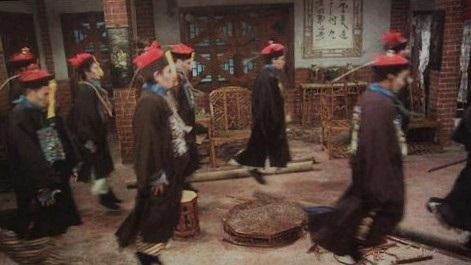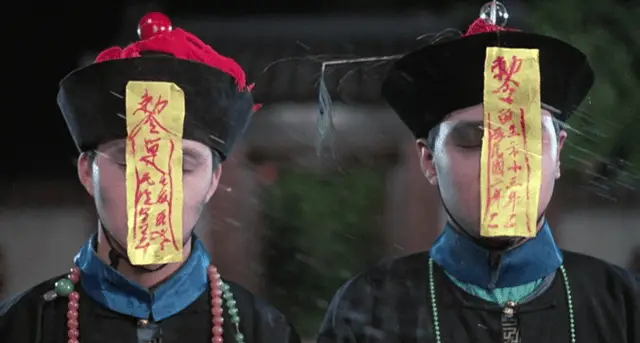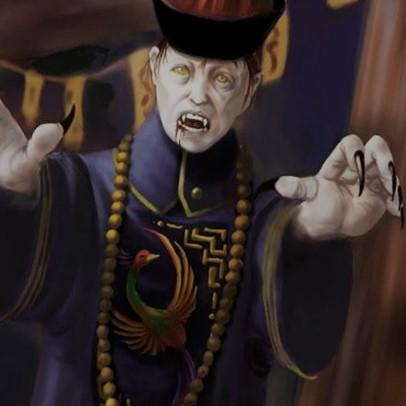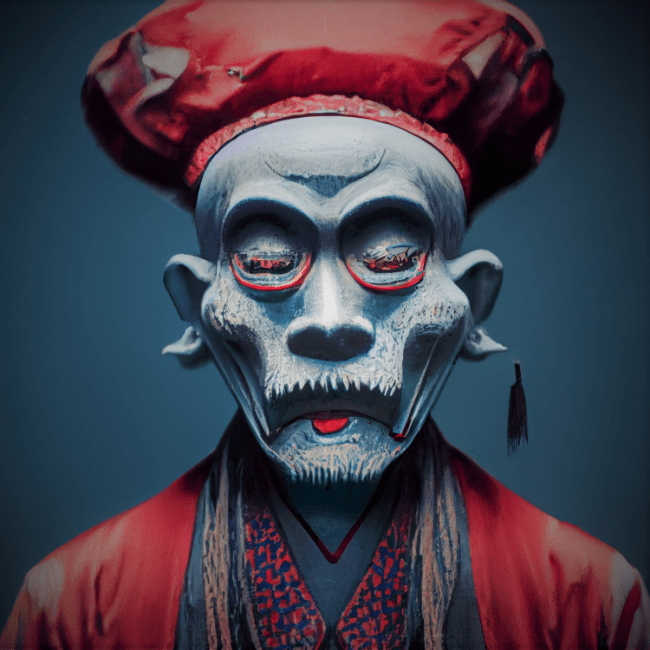Share the Lore!
By: Alex Postrado
The Chinese Zombie That Sucks Out Your Soul
The rest of the world may have been taken over by stories of ghouls, vampires, and zombies, but for about two millennia, East Asia has had jiangshi.
Dressed in formal Chinese garbs which are outright as historic as their origin story, jiangshi hop 一 quite literally 一 from ancient legends into modern pop culture.
Saturating the Chinese horror genre with films, TV shows, and video games that feature them as either villains or 一 surprise 一 even comic relief characters, distinctively known for their iconic clothing, stretched-out arms, and… cadaverous look?
Yes, jiangshi are some type of undead.
Yet, while that’s a fact, their presence and influence in Chinese culture, on the other hand, are certainly far from breathing their last.
As a matter of fact, if anything, jiangshi have only enlivened in the years leading to this day.
But what makes jiangshi these striking creatures of lore?
What made them both a cult obsession in China since the ’80s and ’90s, as well as an eerie reminder of one of the most momentous times in all of Chinese history?
What are Jiangshi?
According to Chinese folklore, going out for a stroll at night puts you at risk of meeting a jiangshi.
In the most basic of terms, jiangshi are revenants.
Reanimated corpses, but with a twist!
Instead of staggering about as zombies do, jiangshi move around by hopping 一 earning them the epithets “hopping corpses” and “hopping vampires“.
But, if you think we are talking about some weak, pitiful hops, let me stop you right there.
These so-called hops are said to be nifty enough to make jiangshi suddenly appear in front of you!
And there is an interesting reason for that.
Jiangshi are said to be such “excellent jumpers” because they have someplace they aim to promptly reach.
Unfortunately for them, their bodies are rendered “stiff” 一 except for their arms, which they extend out for extra mobility.
But, basically, if they want to go somewhere, they would have no other choice but to hop their way to it.
This detail of the jiangshi lore is exactly what gave the creatures their name.
In Chinese, the character read as “jiang” 一 seen in the name “jiangshi” 一 literally means “stiff” or “hard“.
The name could also be spelled geung-si, kang shi, or chiang shi, depending on the region.
While the monster itself also pops up, from time to time, in stories from other countries 一 like, in Japan, where they are known as kyonshi, in Vietnam as cương thi, in Indonesia as vampir cina, in Malaysia as hantu pocong, and in Thailand as phi dip chin.
But how do you compare jiangshi with their more popular Western revenant counterparts, the zombies?

Well, there are several ways to do that. And first on the list has something to do with their appearance.
Unlike zombies, Jiangshi are said to wear a distinct type of garment.
Simply described as a “uniform coat-like robe” and a red “round-top tall rimmed hat“, this specific type of clothing could remind one of what Chinese officials used to don during the Qing dynasty.
Moreover, other depictions show jiangshi having a paper talisman 一 sometimes referred to as fulu 一 hanging off their foreheads.

Furthermore, their hair is said to be white and long; their tongue and fingernails 一 black and dirty.
And their skin also calls up nothing of the ordinary 一 with a deathly greenish-white hue to it, caused by mold that grows on their already decaying bodies.
Another way that defines jiangshi is how they are said to be made.
Chinese culture believes that in every soul, there is a hun and a po.
Hun refers to the spiritual, more heavenly, part of the soul and po is all about the material, more corporeal, piece of it.
When a person dies and the po “fails to leave the deceased’s body“, a jiangshi is born.
Although others claim that jiangshi are, in fact, mindless and soulless creatures — implying that there are other ways one can create or even turn into a jiangshi.
Jiangshi’s powers are also a point of intrigue among many 一 especially due to some, suggesting that with enough acquired energy, a jiangshi can shapeshift into a wolf or even fly.
So, how does a jiangshi acquire energy?
Simple 一 by killing humans and other living beings.
Not the way you might assume, though!
Despite the “vampire” reference in its name, as well as their comparability with zombies, jiangshi don’t drink blood nor devour brains and flesh.
Instead, they suck out the life force 一 also known as the qi 一 of their victims until none of it is left.
Good thing, jiangshi only go about at night as they fear sunlight, so we still have the chance to keep our qi safe and away from the threat of the hopping corpses.

How to Defeat the Jiangshi?
While jiangshi are uniquely dangerous foes to come across with, cinematic references show holding one’s breath to be an effective way of foiling their attack.
And that’s a fairly easy escape if you’d ask me!
But, believe it or not, there are actually a number of other ways to defeat 一 or, at least, ward off 一 jiangshi.
One of which is by carrying items made of peachtree wood.
Zong Lin explains in his book, The Jingchu Suishiji, that since peach is the “essence” of the five elements, it can “subjugate evil auras and deter evil spirits”.
Another thing that can scare off evil in an instant is the sound of a rooster’s call, as it typically signals the rise of the sun 一 of which most sinister entities are afraid.
As for jiangshi, specifically, mirrors could also do the job since they are said to be “terrified of their own reflections“.
Setting the corpses on fire, bearing the hooves of a black donkey, and nailing seven jujube seeds onto particular acupuncture points on the back of the corpses are also believed to work well in keeping jiangshi at rest 一 among other methods which commonly include the use of stuff like a bag of coins; a broom; an ax; a handbell; a stonemason’s awl; some vinegar; adzuki beans; glutinous rice; a black dog’s blood; a thread marked with chicken blood, black ink, and some burnt talisman; the Bagua sign; and several others.
Chinese Folklore’s Long History with the Jiangshi
If we would track down the origin of jiangshi, it would take us to one of the earliest written records mentioning it.
The text What the Master Would Not Discuss 一 otherwise known as Xin Qixie or New Strange Events 一 by Qing Dynasty scholar Yuan Mei, as well as another Ji Yun work, titled Fantastic Tales, explored the lore of jiangshi and its roots by tying it to events that happened during the unification of China.
Back then, the country’s first emperor, Qin Shi Huang, was still in the process of conquering the rest of China.
His forces were fought off by local warriors who resisted his visions of unification. But, a lot of these warriors 一 along with other workers of the time 一 frequently ended up dead in the battle.
The thing about this was, these people often came from various poor 一 usually far-flung 一 parts of the country.
And when they die, those who could not afford any means of transport had almost no chance of having their deceased bodies sent back home to their grieving families.
So, as a way to solve that, people commonly hired Taoist priests to perform rituals to reanimate corpses and allow them to return on their own 一 and by foot 一 to their bereaved loved ones.
Several scholars also cite the influence of a practice called Xiangxi ganshi in the development of the lore of jiangshi.
In this, the corpses would be “arranged upright in single file” and “tied to long bamboo rods on the sides” while two designated men carry them at night to transport their bodies back to their respective hometowns.
It is said that seeing this practice in action from a distance could give someone the illusion of literal “hopping corpses“.
As time went on, though, and as western folk stories and influences reached China, the lore of jiangshi likewise evolved 一 taking us to the image of jiangshi that we commonly see in pop culture today.
Tapping more on the vampire element, as seen in hit films of the ’80s and ’90s jiangshi craze.
Nevertheless, for over a thousand years and counting, jiangshi remained a prominent supernatural figure in Chinese folklore.
And whether it is as a foreboding entity in the Chinese horror scene or as a grim relic of the deaths from a distant past, these hopping corpses clearly drive home the message that there is no stopping their force anytime soon.
References:
Halloween Special: What Are Chinese Hopping Zombies? Meet Jiangshi, The Undead Horror Film Villains Made Famous In Cult 80s Hong Kong Movie Mr Vampire Jiangshi: The Terrifying Chinese Hopping Vampires Chinese Hopping Vampires: The Qing Dynasty Roots Behind The Jiangshi Legend The Living Dead: Chinese Hopping Vampires Jiangshi: Chinese Hopping Vampires For The Record, Chinese Jiangshi Are Zombies, Not Vampires
